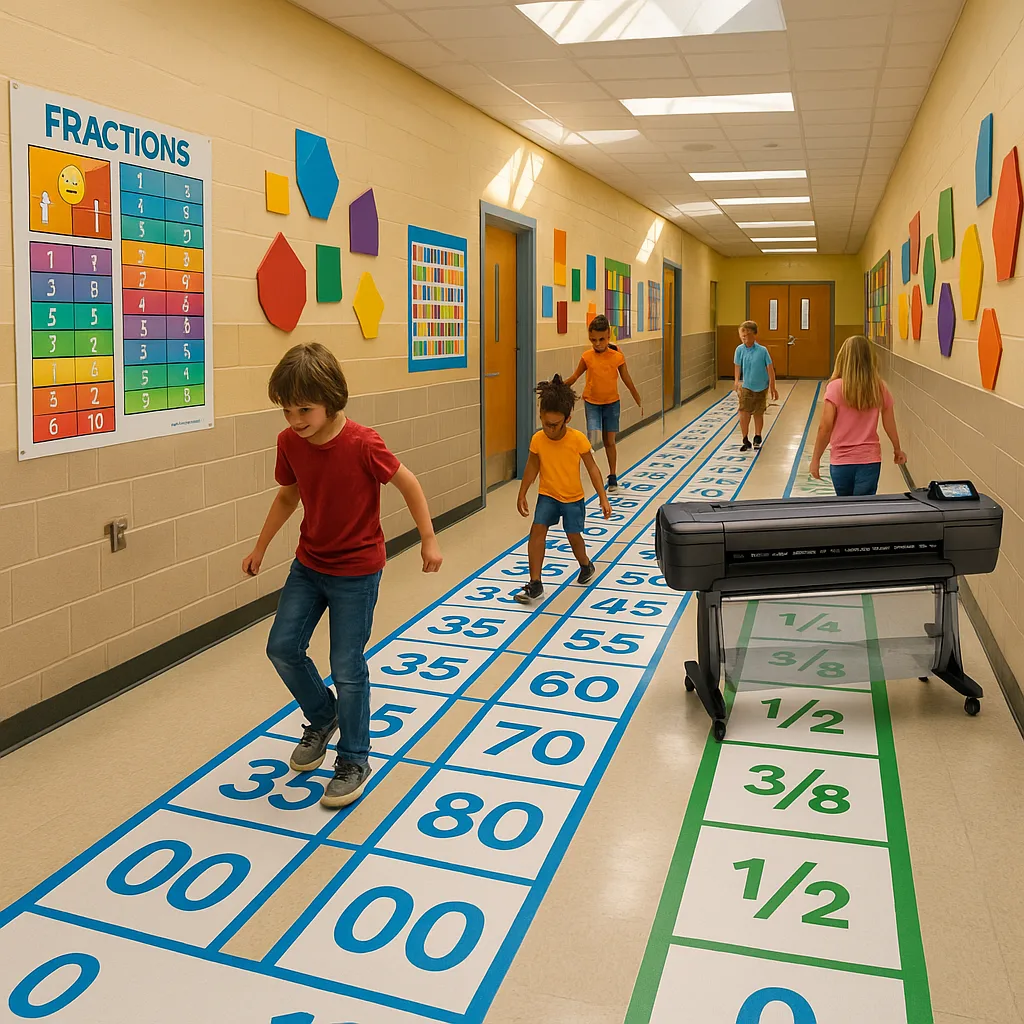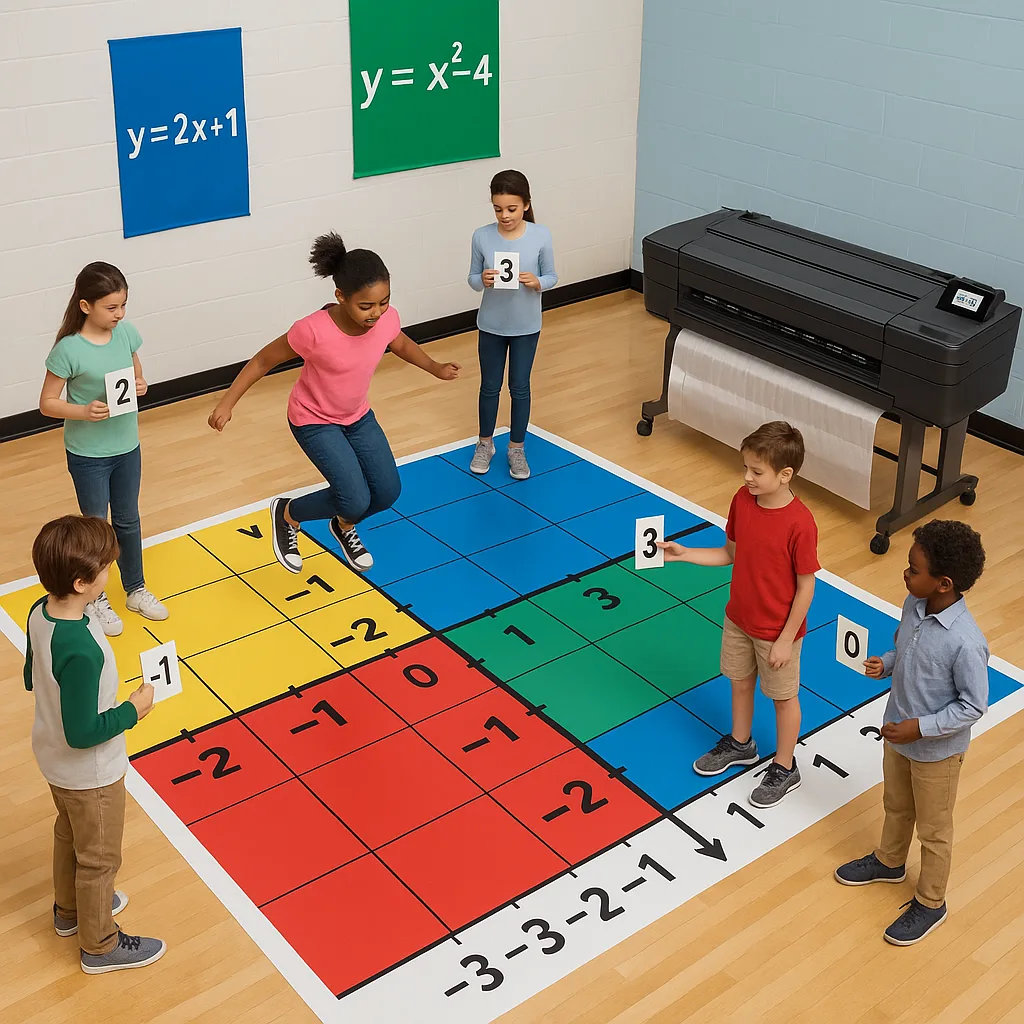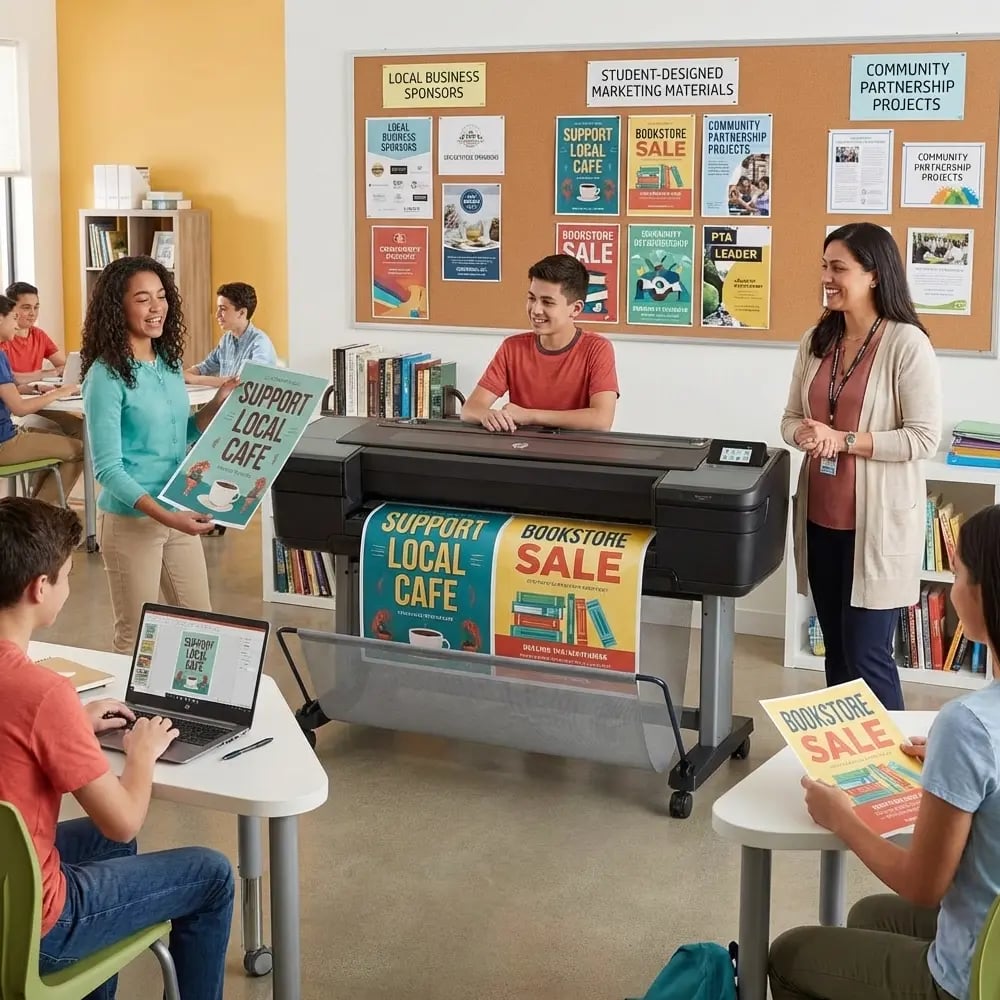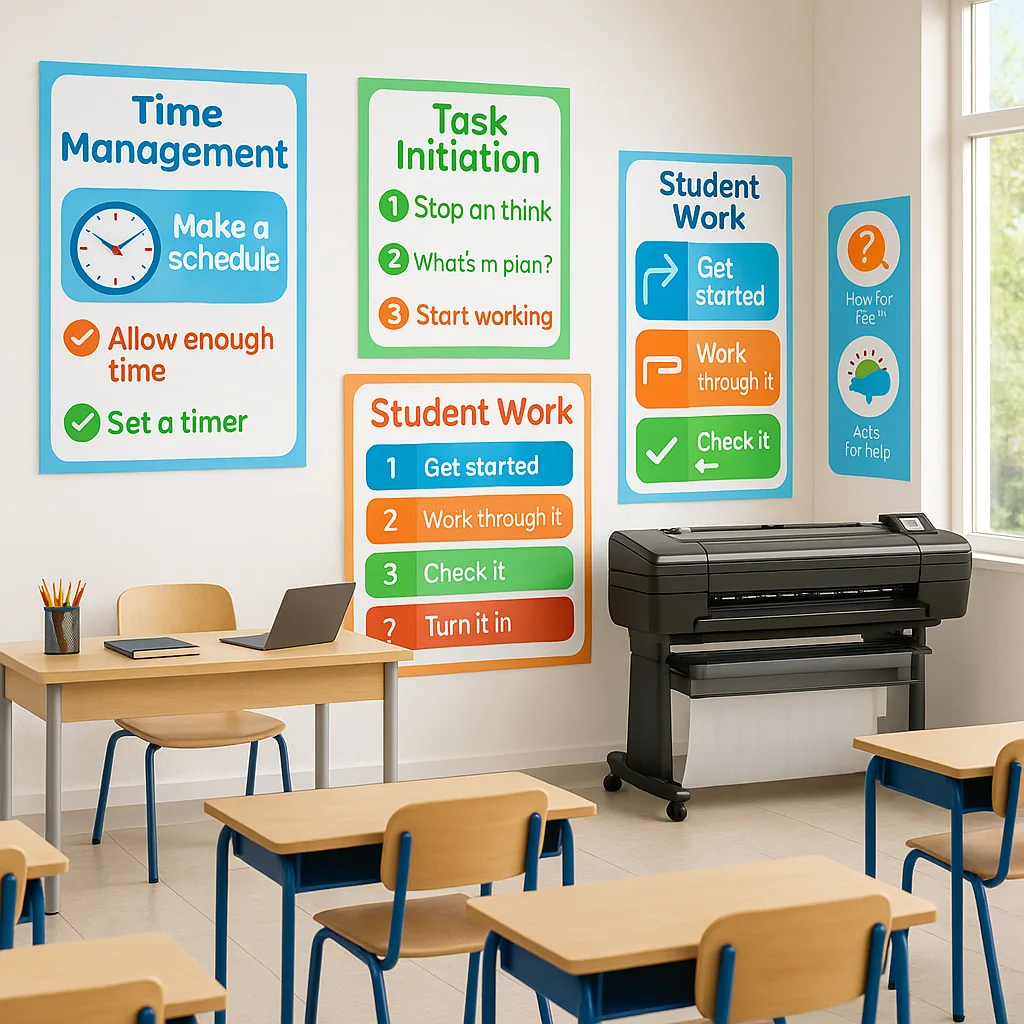
Poster Printer Machines for Kinesthetic Math Learning
Picture this: students literally walking through fractions, hopping along multiplication patterns, and physically tracing algebraic equations. This vision becomes reality when schools harness poster printer machines for kinesthetic math learning. By transforming ordinary corridors and playgrounds into giant mathematical landscapes, educators create immersive learning environments that engage the whole body in mathematical thinking.
The Science Behind Movement and Mathematical Understanding

Research from Stanford University’s Jo Boaler demonstrates that mathematical understanding deepens when students engage multiple senses. Furthermore, kinesthetic learners—who comprise approximately 15% of the student population according to VARK learning style research—often struggle with traditional seated instruction. These students need movement to process information effectively.
Additionally, the National Council of Teachers of Mathematics (NCTM) emphasizes the importance of spatial reasoning in mathematical development. When students physically walk number lines or jump between fractions, they develop stronger mental models of mathematical relationships. This embodied cognition approach transforms abstract concepts into concrete experiences.
of students show improved retention when learning through movement-based activities
Essential Materials: Poster Printer Machines for Kinesthetic Math
Creating durable, walkable mathematical installations requires specific materials and equipment. The foundation of any successful installation begins with high-quality printing capabilities and appropriate media selection.
First, you’ll need reliable poster printer machines capable of producing large-format graphics. The Education Flex 30 Poster Printer Cutter Package B offers the perfect combination of printing and cutting capabilities for creating custom floor graphics.

Perfect for creating custom-cut mathematical pathways
Media Selection for Floor Graphics
Not all printing materials withstand foot traffic equally. For indoor installations, consider slip-resistant vinyl with protective lamination. Moreover, outdoor installations demand weather-resistant materials that maintain visibility and safety in various conditions.
Essential materials include: • Heavy-duty floor vinyl with anti-slip coating • Protective laminate for high-traffic areas • Removable adhesive options for temporary installations • Outdoor-rated vinyl for playground applications
Subsequently, proper installation requires thorough surface preparation. Clean floors ensure optimal adhesion, while strategic placement maximizes educational impact without disrupting traffic flow.
Designing Effective Number Line Installations
Basic Number Lines
Start with 0-20 for K-2 studentsImplementation Tips
Create 12-inch spacing between numbers. Use contrasting colors for positive and negative sections. Include visual markers every 5 numbers for easy reference.Fraction Walks
Visual representations of parts and wholesDesign Elements
Use pie charts at key fraction points. Color-code equivalent fractions. Include decimal conversions for upper grades.Skip Counting
Multiples highlighted for pattern recognitionPattern Creation
Design branching paths for different multiples. Use shapes to mark landing spots. Include visual multiplication tables alongside.The NASA Engineering Design Process provides an excellent framework for creating these installations. First, identify the mathematical concepts students struggle with most. Next, brainstorm movement-based solutions that address these challenges. Then, prototype small sections before committing to full installations.
Design considerations must include: • Age-appropriate spacing (younger students need larger numbers) • Clear visual hierarchy with bold, readable fonts like Fira Sans Condensed • Safety features including non-slip surfaces and rounded corners • Integration with existing curriculum standards
Advanced Installation Ideas Using Banner Printing Machines
While floor graphics create the foundation, banner printing machines expand possibilities for vertical mathematical displays. Wall-mounted components complement floor installations, creating immersive 360-degree learning environments.
Consider these advanced applications:
Equation Trails: Students follow physical paths that represent algebraic transformations. Each step along the path shows the mathematical operation performed.
Geometry Gardens: Outdoor installations where students walk perimeters, calculate areas, and explore angle relationships through movement.
Data Walk Displays: Transform hallways into living graphs where students become data points, physically creating bar graphs and scatter plots.
The HP Latex 800 Printer excels at producing weather-resistant graphics for outdoor mathematical installations. Its eco-friendly latex inks ensure safety around children while delivering vibrant, long-lasting colors.
Successful kinesthetic math installations require thoughtful planning and strategic implementation. Begin with pilot programs in single hallways or classrooms before expanding school-wide. This approach allows refinement based on student feedback and teacher observations.
Phase 1 introduces basic number lines in primary hallways. Teachers integrate short movement breaks where students walk to specific numbers or hop between multiples. Phase 2 adds complexity with fraction bars and decimal conversions. Finally, Phase 3 incorporates advanced concepts like coordinate planes and algebraic pathways.
Measuring Success: Assessment Through Movement
Assessment becomes dynamic when students demonstrate understanding through movement. Rather than traditional paper tests, teachers observe students navigating number lines to solve problems. Video documentation captures progress over time, while student reflections reveal deeper mathematical connections.
Creating rubrics for movement-based assessment requires clear criteria. For instance, fraction understanding might include: accurately stepping to equivalent fractions, explaining relationships while moving, and creating original fraction problems using the installation. These authentic assessments align with state standards while honoring diverse learning styles.
Ready to Transform Your School’s Math Learning?
Creating kinesthetic math installations requires the right equipment and support. Poster Studio Express provides comprehensive packages designed specifically for educational environments.
Conclusion: Mathematics in Motion Creates Lasting Learning
Transforming hallways and playgrounds into mathematical landscapes revolutionizes how students interact with numbers. Through strategic use of poster printer machines for kinesthetic math learning, schools create environments where abstract concepts become tangible experiences. These installations don’t just teach mathematics—they inspire movement, engagement, and joy in learning.
The investment in proper equipment pays dividends through increased engagement, improved test scores, and reduced math anxiety. As more schools embrace embodied cognition principles, kinesthetic math installations will become essential components of modern educational environments. Start small, measure impact, and watch as students literally step into mathematical understanding.







